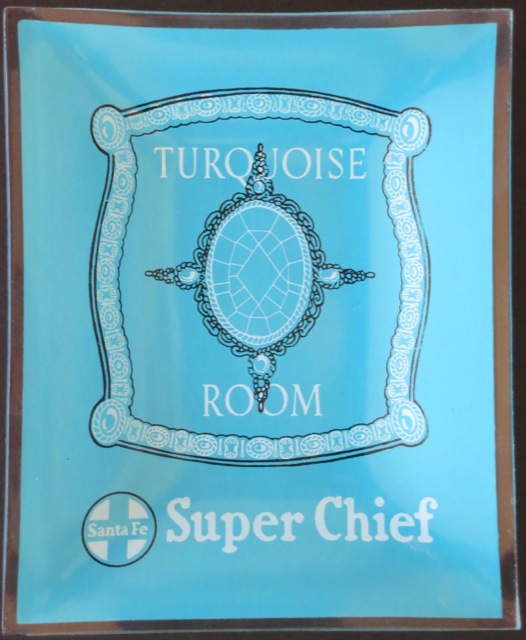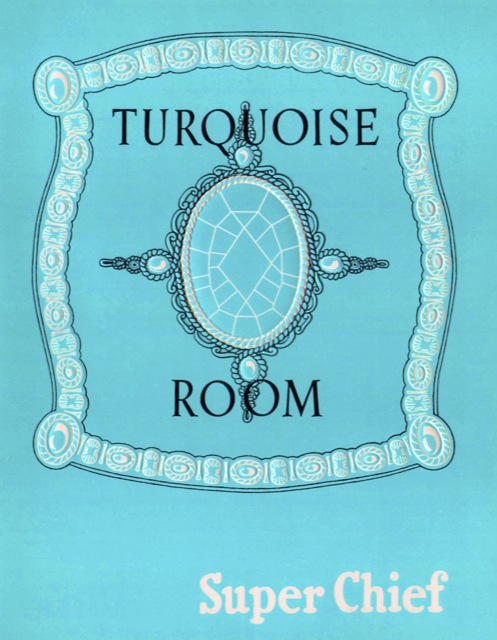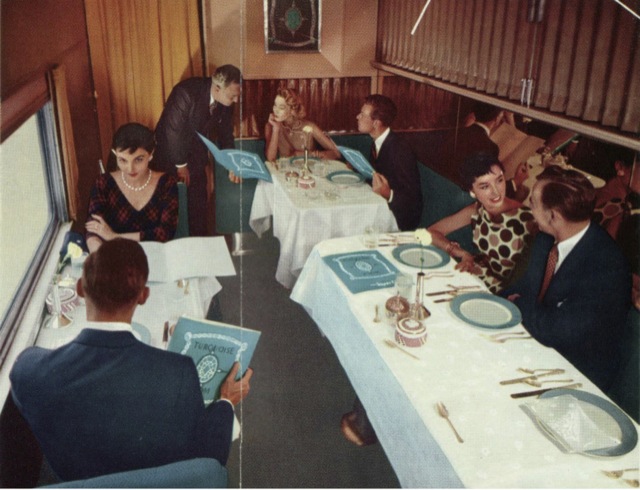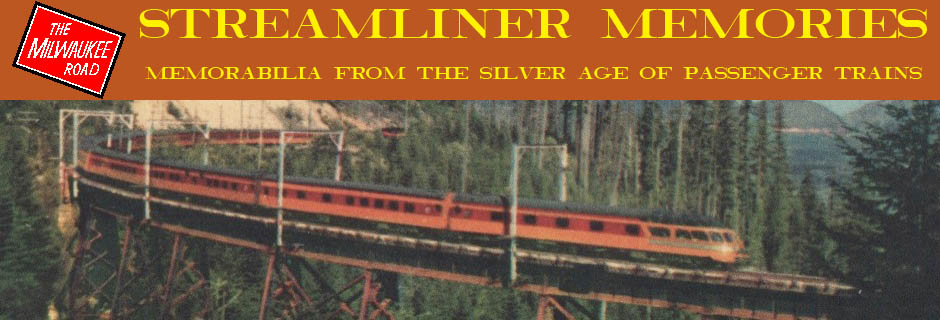Santa Fe publicity promoted the Turquoise Room as “the only private dining room on rails.” After 1954, when Union Pacific included a private dining room in the dome-diners of the City of Los Angeles and City of Portland, this changed to “the first private dining room on rails.”

The Turquoise Room was decorated with light woods and a brilliant turquoise mosaic on one wall. By the Amtrak era, this mosaic was simply a framed piece of paper, but for the original car, “Zuni Indians hand-fashioned the sterling silver medallion inlaid with specially selected turquoise.” This medallion was replicated on the room’s menus, in advertising, and on ash trays that the railroad sold to customers for a nominal cost. Turquoise was particularly appropriate to use on the Super Chief as it is not only used for distinctive Southwest Indian jewelry, it is sometimes called the traveler’s stone that is said “to possess healing and protective powers.”

As shown in the photo below, which is from a brochure, the Santa Fe had special Turquoise Room service plates that were white with a turquoise band and a gold rim. The words “Turquoise Room” were also discretely written in gold across the top of each plate. As service plates, these would be removed and the meals themselves would be service on the Santa Fe’s Mimbreño china.
 Click image to download a 6.4-MB PDF of this brochure about the Super Chief and the Pleasure Dome. Although this is a photo, this brochure also contains art work by Tom Hall, who did illustrations for many companies including Schlitz beer, Hart Schaffner & Marx, and Kotex.
Click image to download a 6.4-MB PDF of this brochure about the Super Chief and the Pleasure Dome. Although this is a photo, this brochure also contains art work by Tom Hall, who did illustrations for many companies including Schlitz beer, Hart Schaffner & Marx, and Kotex.
The right side of the photo also shows an accordion curtain that provided privacy from a hallway on one side of the room. When the room wasn’t being used by private parties, the curtain could be opened so that anyone could use the room as an additional lounge.
